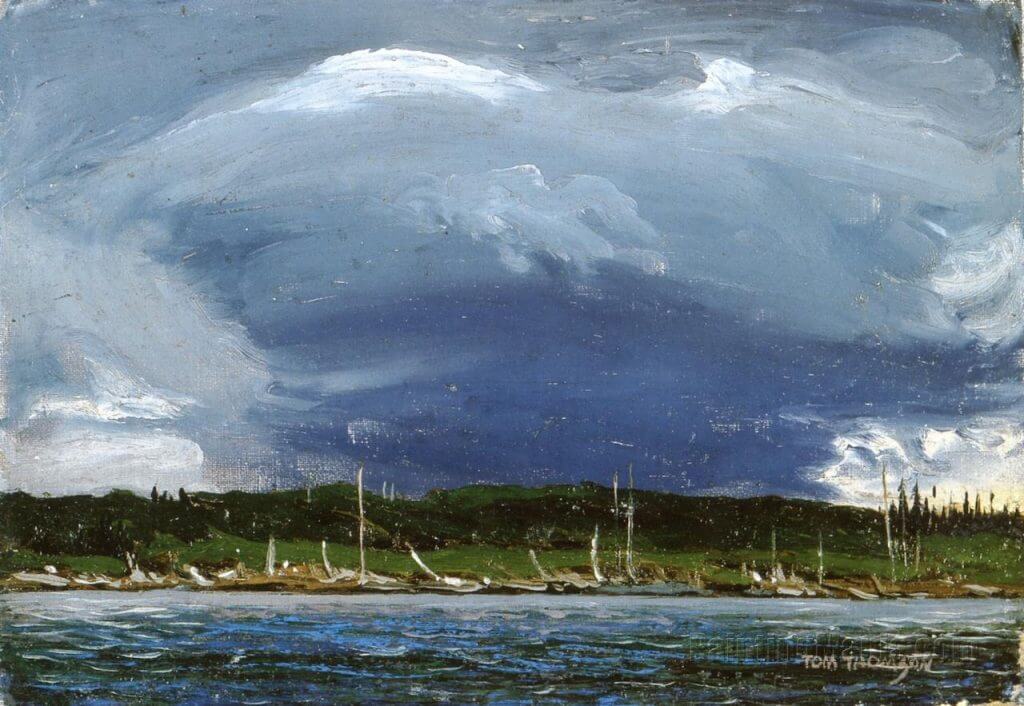
When I’m composing I’m almost always playing along with something that’s already sounding. Pop musicians often begin with a groove, but since I don’t make beat music (at the moment) I often begin with free improvisation at the keyboard. I’m searching for something—a chord, a bit of melody—that I haven’t exactly heard before. I’m searching for something novel, yet at the same time familiar enough to recall musics I already like. There’s also some ventriloquizing going on: it sometimes feels as if I’m pretending to be someone else whose music I might enjoy!
At some point this improvisation becomes a part that stands on its own—material from which to derive other parts or against which I can keep improvising. Now I shift modes from searcher to observer, listening to the improvised part as if surveying a map spread out in front of me, noticing routes and topographies that weren’t apparent when I was on the ground, in the thicket. As the improvised part plays, I play along like a one-way jam session. It’s one-way because the initial part can’t react to my playing along, which is a good thing because something needs to remain constant at this stage. I try out different kinds of playing along: harmonizing like a good group singer (hit those thirds and tenths—nice!), providing rhythmic accompaniment, staying out of the way, finding the holes here and there, and exploring going against the harmonic grain (that’s not C major anymore, it’s A minor!). For the most part mostly I listen while playing to see if I can figure out what, if anything, that initial part needs to make it more than itself.
It may sound strange, but even though the composition process has just begun here I’m already considering whether or not my initial improvisation is complete on its own. I’m assuming a lot, specifically 1) the possibility that what I’ve begun with is already enough and not in need of any playing along with, and 2) that finishing things through minimal means is preferable to finishing them through maximal means. As I listen, observing the music, I notice details of its form, tempo, mood, and go-to gestures. The improvisation has already boxed me in somewhat, but maybe it also offers ways to get out? Playing along to the music is like making multiple attempts to figure out how to make the most of the details I’m noticing.
There are also pragmatic considerations as I play along. I try out different sounds to hear how they go with what I started with: there are resonant and dry sounds, fat and thin sounds, sharp and rounded sounds, hollow and solid sounds, clean and dirty-muffled sounds, and so on. I’ll play the same part over and over again while trying out different sounds (and unbeknownst to me, solidify the part I’m playing because I’m too busy evaluating one timbre after another). Trying out different sounds can lead to either revelation (this bowed kalimba is perfect!) or a sense that I’ve lost track of playing along’s most important function, which is to meaningfully interact with what is already sounding. And so the process unfolds as I listen to and play along with the improvisation and try out various sounds.
•
At some point—sometimes it’s days or weeks or months later—I start hearing things in the initial improvisation that were never apparent at the time I did it. I start hearing the musical thread—the lines of musical thinking—that I was following as I aimed for this note and missed it by a semitone, or jumped for a dramatic deep chord and hit upon something partly wrong yet still adequately cool. Now I hear those moments as signposts that can anchor a piece. The moments are rich in information about destinations, and so are the notes leading up to and away from those moments. Now I’m hearing the flow of what I was trying to say my first time around.
Speaking of hearing flow, it might surprise you to hear that composers don’t necessarily think about music in technical terms. You might have noticed that I haven’t dwelled on keys or scales, and the reason for this is that this isn’t how I think at an instrument. (Does a painter think consciously about the color blue except insofar as blue conveys a certain kind of energy and mood? How do musicians “think” at their instruments?) An acquaintance in school who was a composer once came up to me after I had played a vibraphone piece and observed, “you must really like Dorian [mode].” At that moment I realized that I had composed the piece not upon my knowledge of modes but around the vibraphone’s shapes and limitations (e.g. its lowest note is an F). My acquaintance’s observation wasn’t entirely wrong, but it wasn’t right either. Instead of keys and scales, one can think about the flows of moments, drama, destinations, and hand shapes. The potentials of these elements become clearer when I’m playing along and trying to understand the improvisation that began the process. That’s what playing along is: a way to understand what someone else—or yourself, a while ago—is doing and then fitting into that to amplify it.

Leave a comment